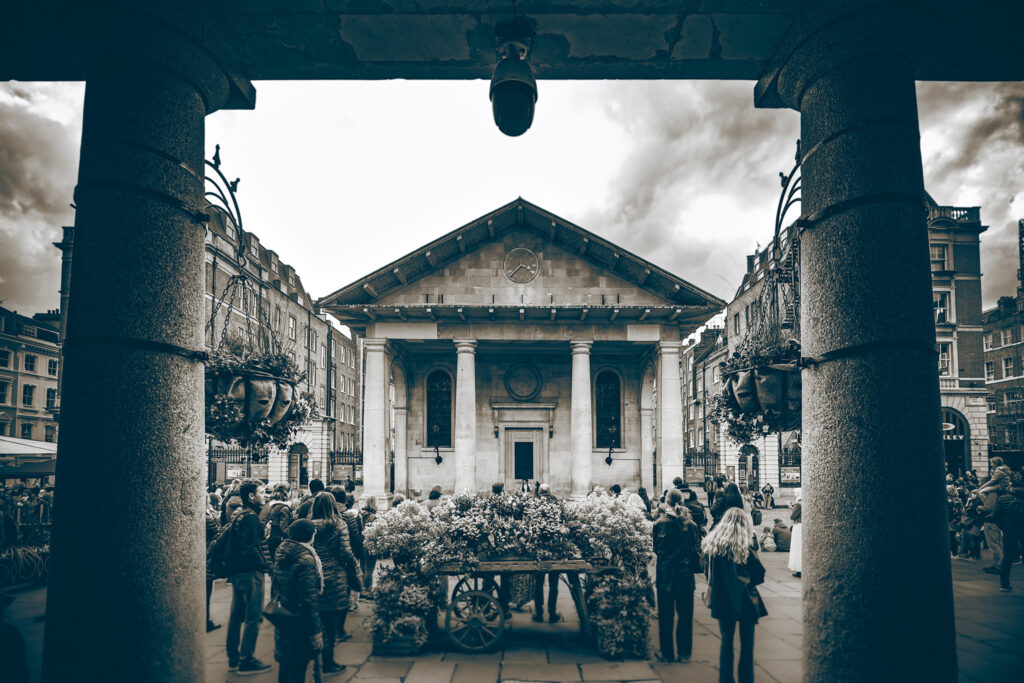
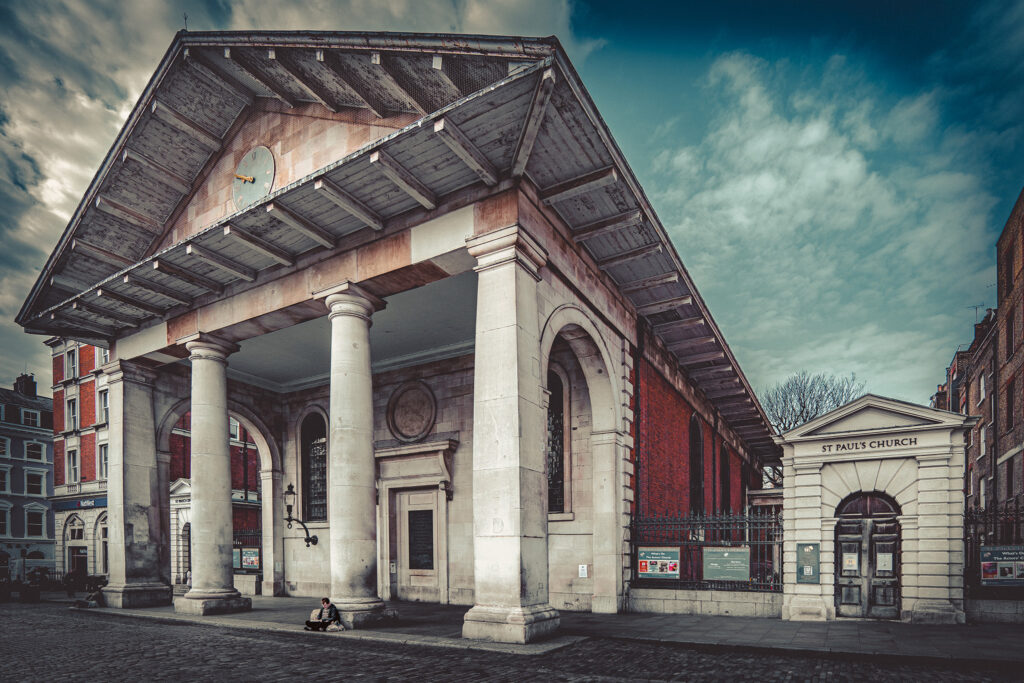
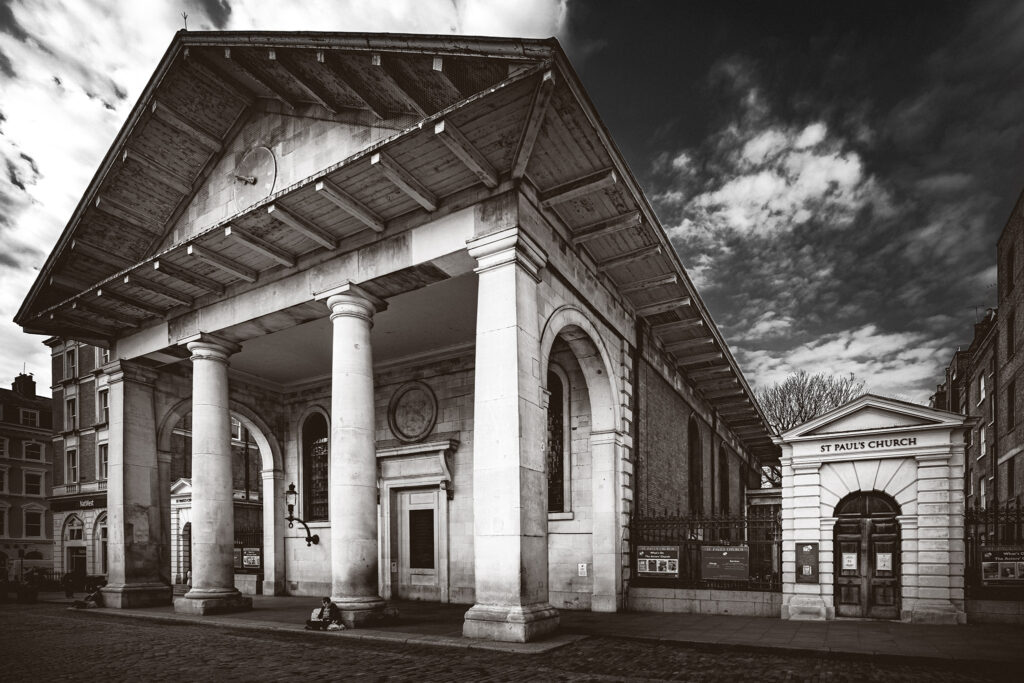

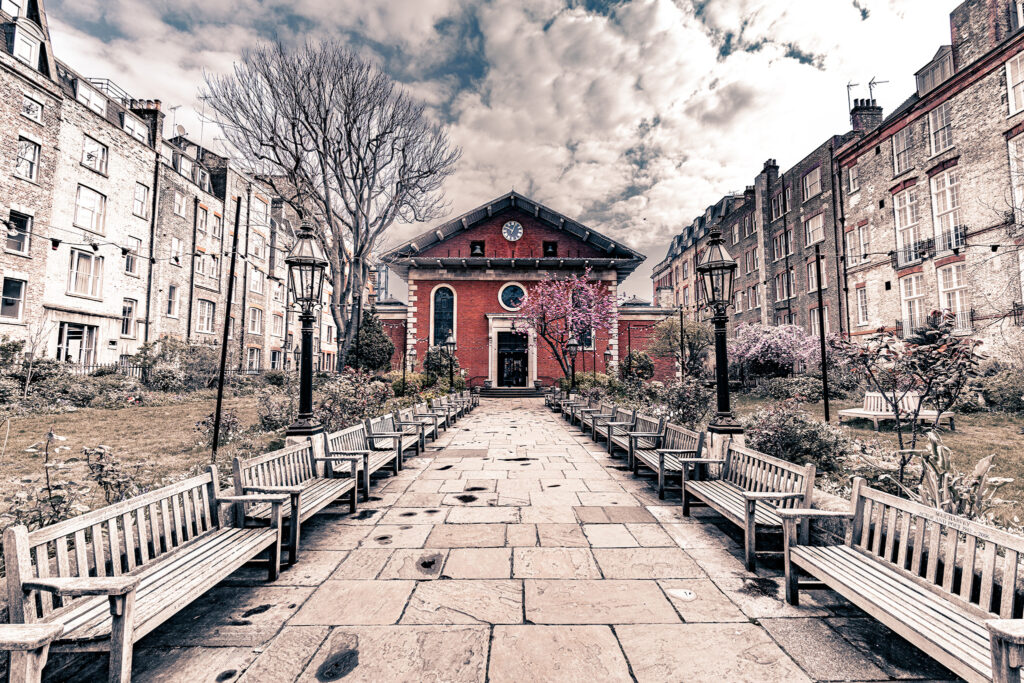
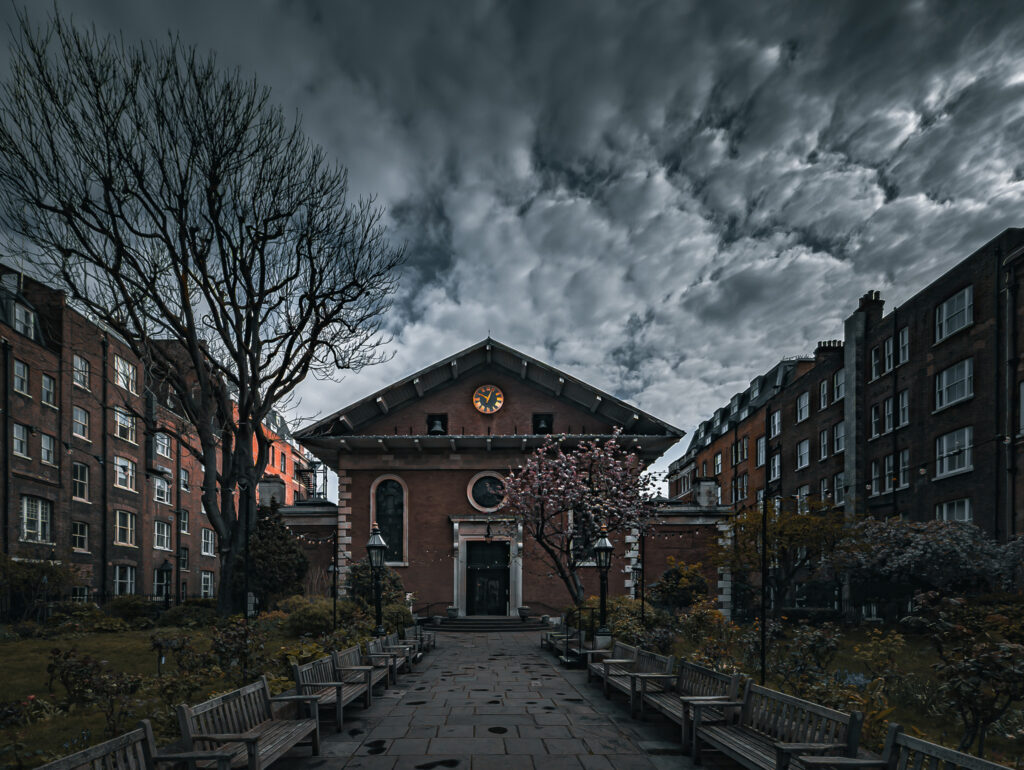
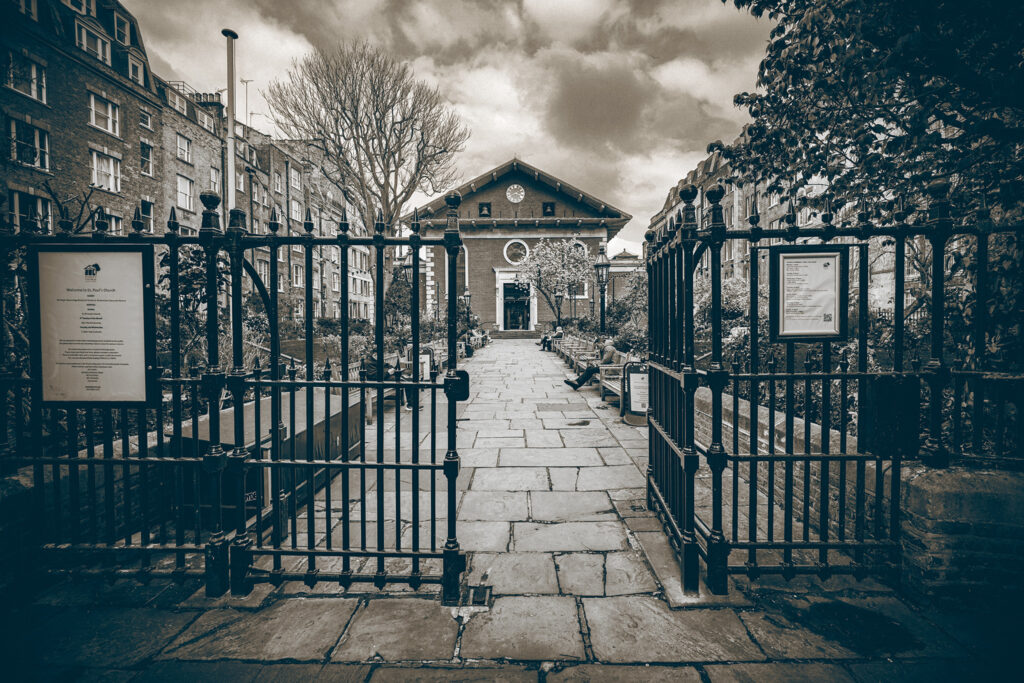
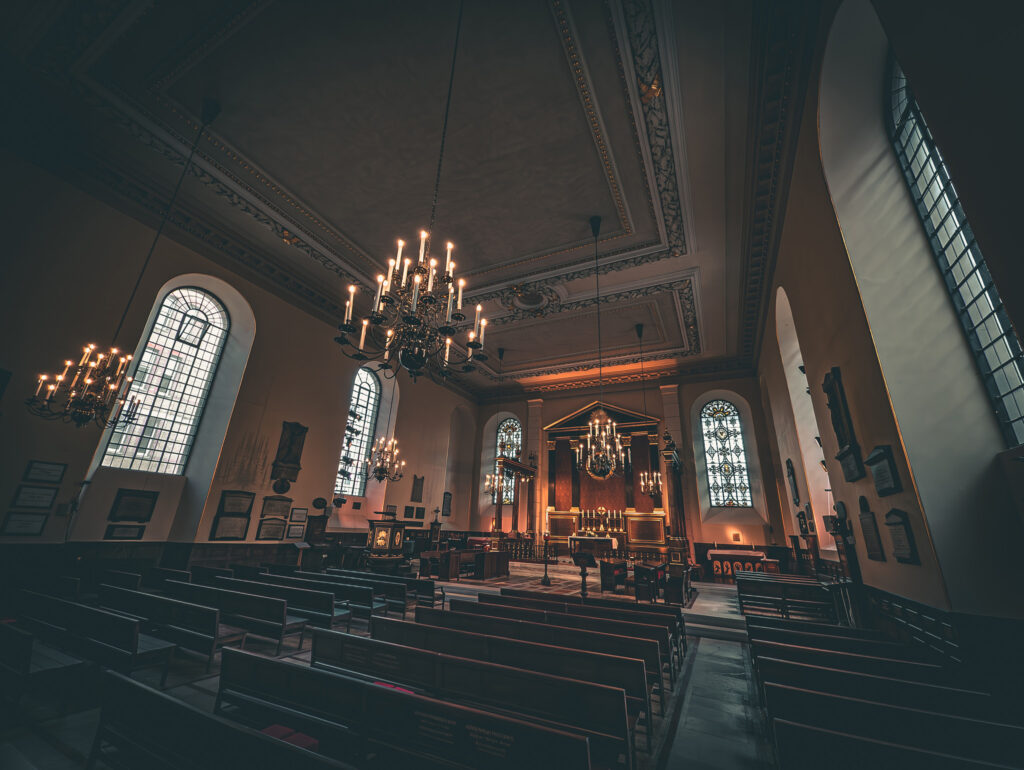
When the Earl of Bedford sent for Inigo, he told him he wanted a chapel for the parishioners of Covent Garden, but added he would not go to any considerable expense; ‘In short’, said he, ‘I would not have it much better than a barn.’ ‘Well! then’, said Jones, ‘You shall have the handsomest barn in England.’
— Horace Walpole, Anecdotes of painting in England: with some account of the principal artists; and incidental notes on other arts, Vol. 2, 1782.
What is interesting about Inigo Jones’ few remaining works for me (and keeping in mind that his buildings all suffer to a great extent from the fate of Theseus’ ship — who is to say that, for instance, St. Paul looked like this when the Earl built it in 1633, prior to restoration and the fire and alterations and un-restorations?) is their striking, somewhat-uncanny prismatic nature. They have those Palladian attributes (columns, arches, garlands, rustication, etc.) but the underlying geometry of multiplied cubic volumes and extruded simple polygons seems more foregrounded than any weaponized populist nostalgia for a lost age of golden greatness that the term “Classical” might typically imply. Perhaps it has to do with the fact that Jones was largely a self-taught architect from a place without many substantial remnants of Graeco-Roman antiquity, and for him the recently-deceased Palladio was essentially a modern, cutting-edge foreign designer worth emulating for his successful practice.
Leave a Reply